The conversation around gas ranges and their impact on indoor air quality and the environment is growing louder, and rightfully so. Recent studies have shown that cooking with gas can release harmful pollutants such as nitrogen dioxide and carbon monoxide into your home. These pollutants not only pose risks to respiratory health but also contribute to environmental concerns. If you’re cooking with gas, proper ventilation is essential to keeping your kitchen and your home a healthy space.
At Mrs. G, we’re committed to helping you make your kitchen safer and more efficient. While a high-powered vent hood is always the best choice, I know that not every kitchen can accommodate one. For those spaces, an over-the-range (OTR) microwave with strong ventilation can be an excellent solution.
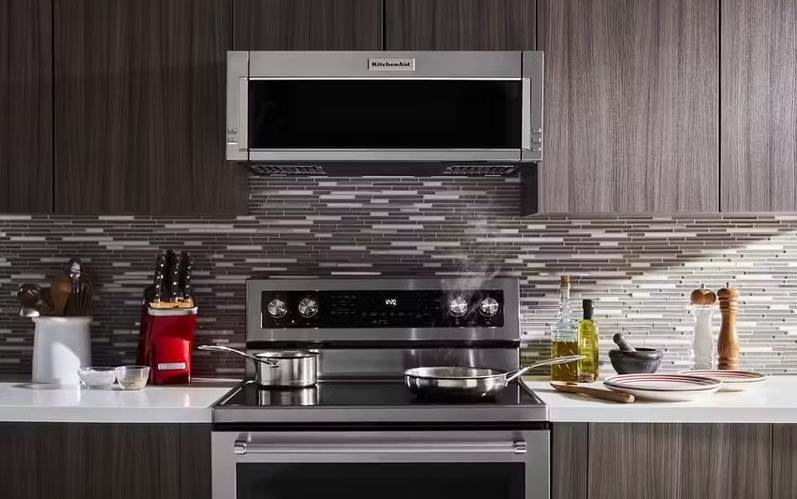
Over-the-range (OTR) microwaves are a popular choice in many homes, especially where counter space is limited. However, they often come with drawbacks when it comes to ventilation. Most OTR microwaves rely on recirculating vent systems, which can struggle to effectively remove smoke, grease, and odors from your kitchen. This can lead to poor air quality and lingering smells—especially if you cook frequently or use high-heat methods like frying or grilling.
Common Challenges with OTR Microwaves:
1. Weaker Ventilation Power: Compared to dedicated range hoods, OTR microwaves typically have lower CFM (cubic feet per minute), meaning they don’t move as much air.
2. Recirculating Filters: Many OTR models use charcoal filters to recirculate air instead of venting it outside, which is less effective at removing moisture and pollutants.
3. Placement Issues: Their position above the stove can make them less accessible and harder to clean, while also compromising their ability to capture smoke and steam.
How to Make the Most of Your OTR Microwave:
• Upgrade to an External Venting Model: If your kitchen layout allows, choose an OTR microwave that vents directly to the outside. This significantly improves airflow and reduces contaminants.
• Clean Filters Regularly: For recirculating models, replace or clean the charcoal filters every 3-6 months to maintain performance.
• Supplement Ventilation: If your OTR microwave isn’t cutting it, consider adding a countertop air purifier or a window fan to boost airflow.
• Cook Strategically: Use the back burners whenever possible, as they’re closer to the OTR vent. Also, cover pots and pans to minimize steam and grease.
While OTR microwaves may not provide the same ventilation power as dedicated range hoods, with proper maintenance and strategic upgrades, you can still create a healthier kitchen environment.
What to Look for in an OTR Microwave for Ventilation
When selecting an OTR microwave, it’s crucial to choose a model that offers sufficient power and coverage to effectively remove smoke, grease, and other cooking pollutants. Here are three outstanding options we recommend, all currently on display in our showroom:
• CFM: 400
• Standout Feature: Extendable Slide-Out Vent
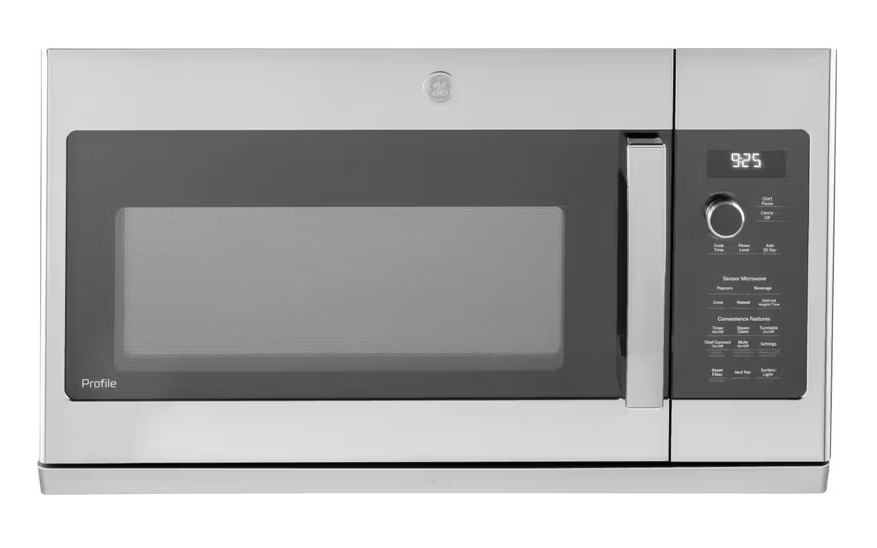
This stylish microwave offers 400 CFM of ventilation power, suitable for most kitchens. Its Extendable Slide-Out Vent is a standout feature, allowing you to extend the vent over your cooktop for enhanced coverage, effectively doubling its capture rate for smoke and odors.
2. LG MVEF1337F
• CFM: 550
• Standout Feature: High Performance 550 CFM
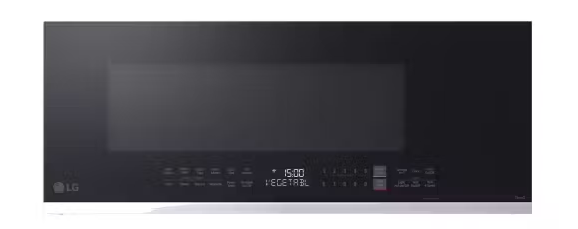
With 550 CFM, this LG microwave delivers powerful, high-performance at an exceptional value to help remove smoke, steam, and odors from your kitchen
• CFM: 500
• Standout Feature: Deeper Design for Enhanced Capture Area
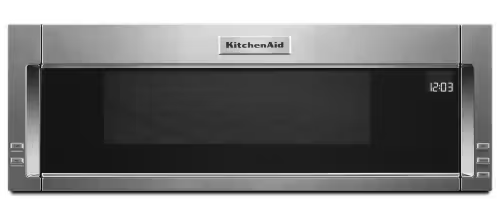
The KitchenAid model offers a deeper-than-average design, providing a larger capture area for better smoke and odor removal. With 500 CFM, it combines powerful performance with a sleek, durable build, making it an excellent choice for high-demand kitchens.
Important Note: The KitchenAid KMLS311HSS model with 500 CFM may require a makeup air system to comply with local building codes. Proper ventilation at this capacity can create negative pressure in tightly sealed homes, so it’s essential to consult your local building codes or a ventilation professional to ensure compliance and optimal performance.
Why Ventilation Matters
Good ventilation is more than a convenience—it’s a necessity. It helps reduce exposure to harmful pollutants, minimizes lingering odors, and keeps your kitchen cleaner by capturing grease particles. Whether you’re remodeling your kitchen or upgrading your appliances, ensuring proper ventilation is one of the best investments you can make for your family’s health and comfort.
If you’d like to learn more about ventilation and its impact on your home, check out this article from Scientific American.
At Mrs. G, we’re here to help you find the perfect solutions for your kitchen. Visit our showroom to see these OTR microwave models currently on display and explore other options to create a healthier, more efficient cooking space.
Here’s to cleaner air and happier cooking!

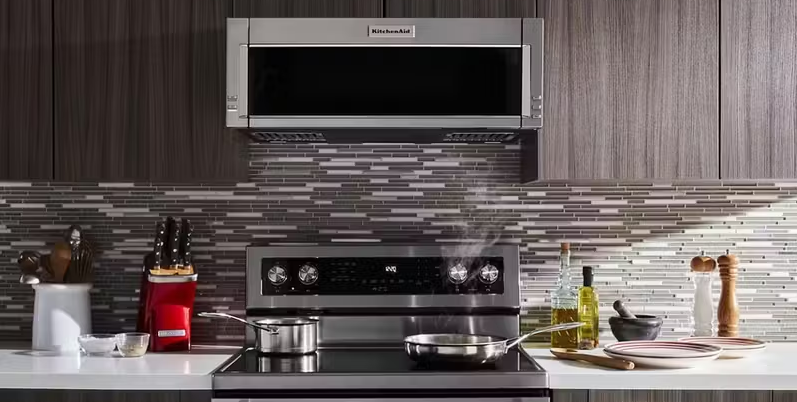
No responses yet